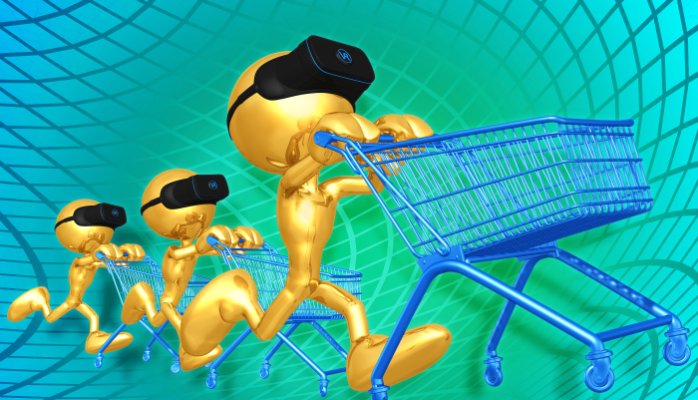Over the past few months, some retailers have been experimenting with virtual reality. With sales lagging, they‘re hoping that in-store virtual reality experiences will be the magic ingredient that lures shoppers back.
Now, though, eBay has announced that it is launching the world’s first virtual reality department store. eBay’s new venture is being rolled out in Australia in partnership with Australian retailer Myer, and it requires nothing more than a free smartphone app and a pair of cardboard “shoptacles.” eBay is giving away 20,000 of the viewers.
According to eBay’s promotional video, virtual reality shoppers can use their eyes to choose products they’re interested in and can see them up close and from different angles. The software remembers what you like and will help you find similar items, potentially saving time.
You can browse, sort and purchase things just by using your eyes.
The unique thing about eBay’s virtual reality app is that it doesn’t rely on a high-end device that you use in a store. You can use it anywhere, including, presumably, in a busy shopping district as one man in the video was doing. I hope he doesn’t hurt himself, because he certainly can’t see where he is going!
Virtual reality shopping apps may prove to be a short-lived gimmick, but they also have the potential to drive customers even farther away from brick and mortar retailers. I wrote recently about Macy’s problems with confusing store layouts, trying to appeal to everyone and failing to define its niche . The eBay virtual reality store will sidestep these problems by remembering your shopping preferences and showing you the kinds of products you like. If it’s true that you can examine items up-close and at the same time access all the information you need, there would seem to be even less reason to drive out to the mall.
Perhaps future iterations will include a mall as well, so we can all experience searching for a parking spot and enjoy the sights and sounds of the food court, without ever leaving the comfort of home.
Interestingly, some brick and mortar retailers are also embracing virtual reality as a technology that can bring customers into the store rather than drive them away. Toms shoes, for example, hopes to entertain its customers with an in-store virtual reality video that immerses them in a company trip to Peru to distribute shoes to children.
Lowe’s and Ikea, meanwhile, are experimenting with virtual reality as a way to allow customers to view and interact with a potential kitchen design. This seems like a godsend for people like me who can’t begin to envision whether the taupe granite will look good with the cherry cabinetry. In this context, virtual reality has great potential to improve the customer’s experience, reduce frustration andbring customers into the store.
As a customer experience consultant, I see customer experience at the heart of all of these virtual reality efforts. eBay is trying to make the experience easy and personalized. Toms is hoping to entertain and inspire – both positive emotions that drive brand loyalty. Lowes and Ikea are also looking to reduce the negative emotions (indecision, frustration) often associated with kitchen remodels.
In the end, the success of in-store virtual reality may depend on the type of purchase and the degree to which virtual reality enhances the customer’s experience. A video may work in the short term because it’s novel. But if virtual reality becomes more commonplace, people may not venture out to a shoe store just to experience it. On the other hand, if people need help visualizing how a high-end product will perform, an in-store virtual reality feature may give them valuable information that leads to a more satisfying experience. Kitchen showrooms are a good example. Or imagine a car dealership where you could virtually test drive models that weren’t in stock.
For lower end purchases or things that you don’t need to see in person, online virtual reality retailers could be the thing that drives shoppers out of some stores for good.
Where do you think this is headed? Can virtual reality bring shoppers back to stores? Or will we make most of our purchases with cardboard goggles over our eyes? Let us know your thoughts with a comment below.
If you enjoyed this post you will also find these blogs interesting:
The Secret To Rewarding Customer Loyalty
Beware – The Internet Is affecting Your Customer’s Behavior!
The Emotional Experience – Shedding Some Light On Emotions
Find out more about providing an excellent Customer Experience in our latest ebook Unlocking the Hidden Customer Experience.
LinkedIn followers can purchase this for only $4.99 with promo code Hidden50.


